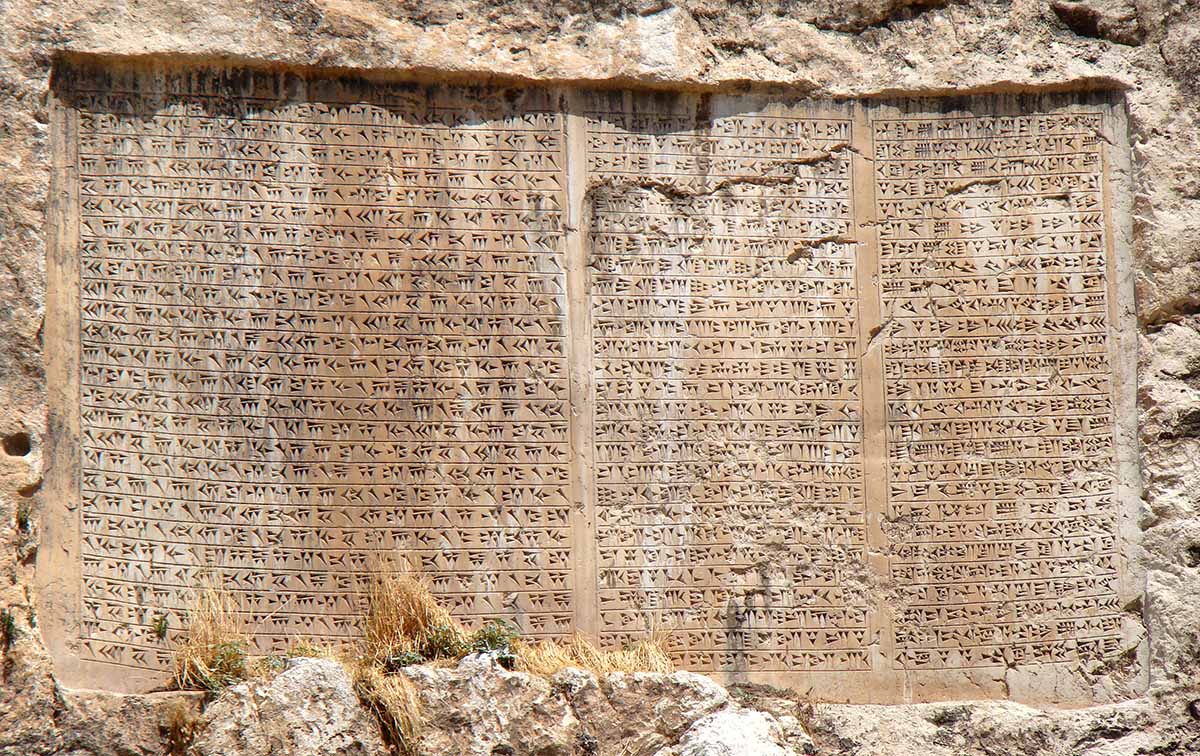The Stylus is Mightier than the Sword
Looking beyond cuneiform signs to the people who impressed them.

‘As many cuneiform signs as exist, I have written on tablets’, reads the colophon impressed on a clay tablet found in Nineveh. ‘I deposited [those tablets] in my palace’, it continues. A colophon usually appears at the end of a written work to immortalise information about its author. This one appends numerous texts found in the palace of Ashurbanipal, who features in it as the ‘I’.
In the seventh century BC, Ashurbanipal created a royal library in Nineveh. In the 19th century, archaeologists created it anew in an image that fits with contemporary notions of a room full of shelves with books. They tried to shape scholarly texts found elsewhere (and at other times) in that image, creating a ‘stream of tradition’, a collection of core cuneiform texts based on the collection in Nineveh. According to that notion, for centuries, the body of learned writings in cuneiform was copied over and over again in exactly the same form with little innovation and variation. Eleanor Robson’s new book, Ancient Knowledge Networks, masterfully challenges this and, to do so, looks beyond the tiny cuneiform signs to the people who impressed them.
Urad-Gula was a healer, or ashipu, in the court of Esarhaddon. He belonged to a family that dominated the king’s scholarly entourage, but his family ties failed to protect him from dismissal. He sent a letter to the king to describe ‘the whole situation’, writing ‘in the days of the king’s father, I was a poor man, son of a poor man, a dead dog, a vile and limited person’. Esarhaddon’s father, however, lifted Urad-Gula ‘from the dung heap’. Despite fulfilling all of his responsibilities as a court scholar, Urad-Gula finds himself neglected. After an endless spiel about the ways his lot has fallen short of his due, he begs the king to reinstate him.
Scholars like Urad-Gula rose and fell out of favour as their professions grew and shrunk in importance. Under some kings, the role of the diviner, or bārû, eclipsed that of the physician, or asû, while in others, the physician never left the king’s side. The book charts the importance of scholars to Assyrian royal ideology.
Scholars also moved around. Bearded bārûs accompanied the king for on-demand divination. Individual physicians found themselves at the king’s direct disposal, like Urad-Nanaya, who begs the king for a month off. ‘When am I ever free?’ he complains: ‘I must do something – otherwise, I shall die!’
Ultimately, scholars are conduits for divine communication to help maintain the health of the king and his empire. When not at his side, they set their styli to clay in the production and reproduction of texts. The survey in Ancient Knowledge Networks shows that there is as much variation in those texts as there is in the people who produced them and the benefactors who relied on (or rejected) them.
The book complicates and humanises the categories that have streamlined the study of cuneiform scholarship. In its own words, this is a book about ‘how knowledge travels’ through the people who carry it, their writings, their responsibilities and their benefactors – human and divine. It animates the lives of scholars through their movements, their works and the movements of their works, until the end of cuneiform culture in Babylon and Uruk. Ancient Knowledge Networks is a study of the history of knowledge that restores context to text – an invaluable re-evaluation of the sources to the modern scholars of Assyria and Babylonia.
Ancient Knowledge Networks: A Social Geography of Cuneiform Scholarship in First-Millennium Assyria and Babylonia
Eleanor Robson
UCL Press 340pp £45 and £27.99, and open access
Moudhy Al-Rashid is Junior Research Fellow at Wolfson College and Tutor in Oriental Studies, University of Oxford.




